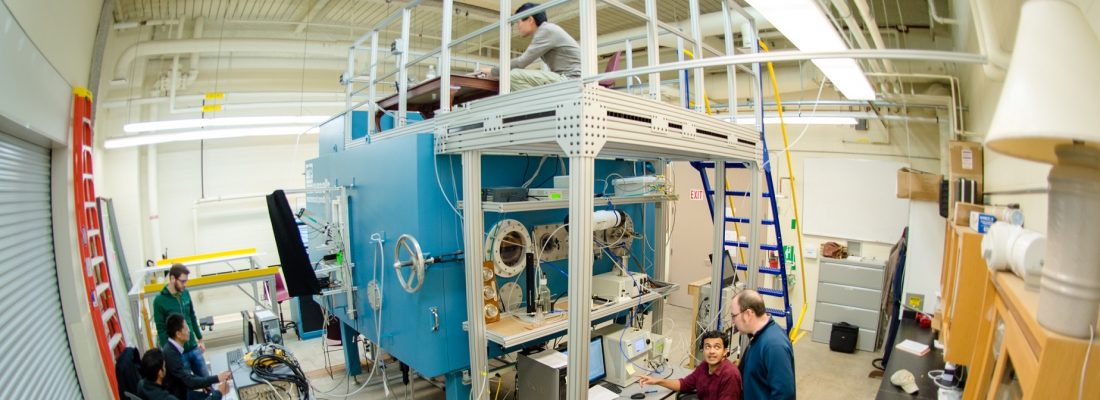The Pi Chamber
Clouds may be the most familiar of turbulent flows, recognized by artistic kindergartners and frequent fliers alike. The mysteries clouds hold are relevant to the formation of rain, the processing of pollutants, and the optical properties of the atmosphere. Real clouds are ephemeral, constantly evolving, and aren’t easy to reach if we want to learn more about their inner workings. So one way to study them is by creating clouds in the laboratory. The Pi Chamber allows us to generate clouds under just about any conditions that can exist in the well-mixed part of earth’s atmosphere (the troposphere). Furthermore, it can generate clouds in a turbulent environment, and it can sustain them indefinitely, making long-time observation or averaging possible. The clouds don’t include the full complexity of the atmosphere, and that is exactly the point: in this laboratory environment, clouds can be reduced to their most elementary features, and unlike in the atmosphere, can be generated with known conditions and controlled aerosols or pollutants, and can be held in steady conditions. This allows us to ask specific questions and to study them in a repeatable way, and to compare the results to theoretical and computational models, which can then be extended to the full context of the atmosphere.
The Pi Chamber is so named because it has an inner, working volume of 3.14 m3 (when we select a cylindrical wall boundary, with a diameter of 2 m and a height of 1 m). It also happened to be delivered to MTU on March 14, pi day, but that was a coincidence. The chamber was designed and built in collaboration with Russells Technical Products in Holland, Michigan. It is associated with instrumentation for measurement of thermodynamic, turbulence, aerosol, chemical, and cloud properties. The chamber has been used for a wide range of scientific investigations, including studies of aerosol-cloud interactions, influence of turbulence on droplet condensation growth, optical propagation through clouds, cloud chemistry, and ice nucleation.
We are grateful to the US National Science Foundation (Division of Atmospheric and Geospace Sciences) for supporting the development of the cloud chamber, and to other organizations that have contributed to supporting the science since then.
